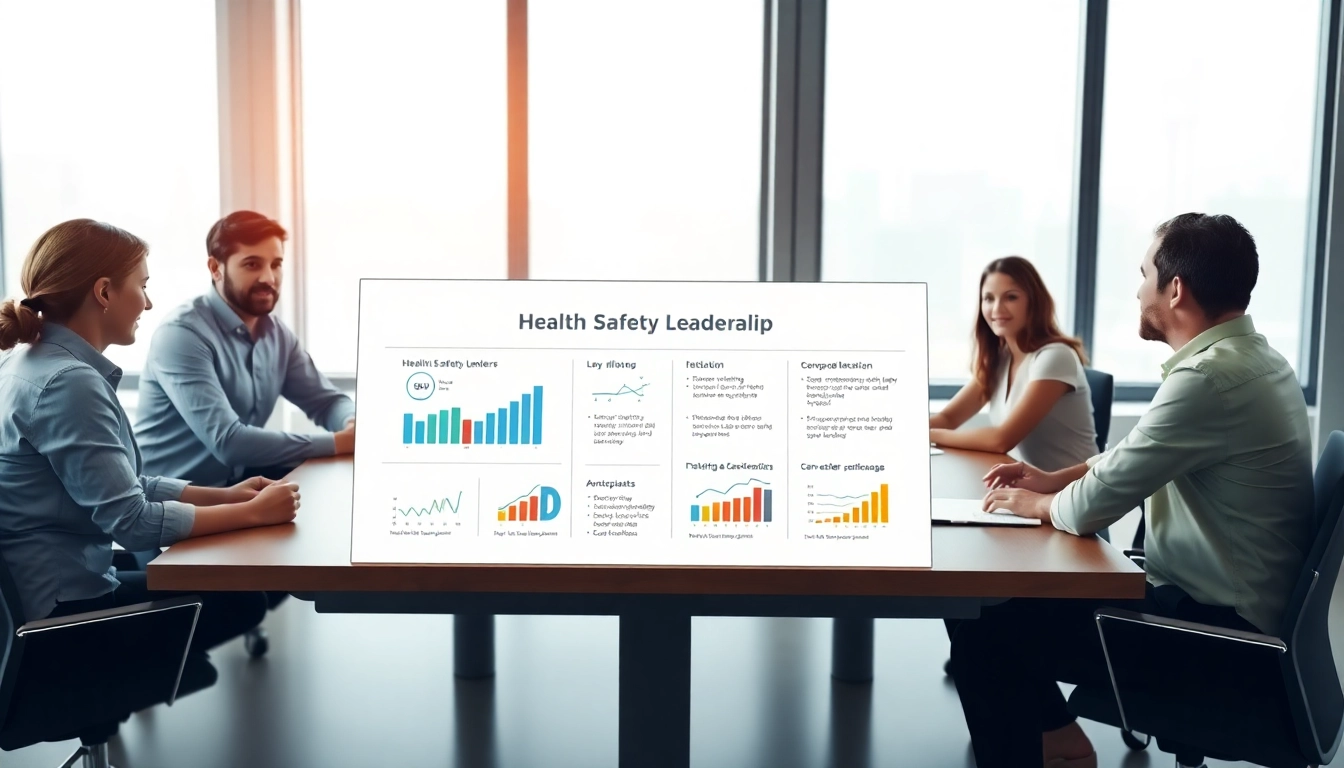Understanding NVQ Level 7 in Health and Safety
What is the NVQ Level 7 Qualification?
The NVQ Level 7 in Health and Safety is a vocational qualification targeting professionals in senior management roles related to health and safety. This qualification is recognized as equivalent to a master’s degree and is designed for individuals in positions that require extensive knowledge of health and safety practices, legislation, and strategic implementation. Participants are generally tasked with demonstrating their understanding of complex health and safety systems, risk management, and the ability to lead health and safety initiatives within an organization.
Key Components of Health and Safety Leadership
Health and safety leadership is multi-faceted, focusing on various components that include:
- Strategic Planning: Developing comprehensive health and safety strategies aligned with organizational goals.
- Risk Assessment: Identifying potential hazards and implementing preventative measures.
- Legislative Compliance: Ensuring that the organization adheres to health and safety regulations and standards.
- Training and Development: Facilitating continuous education for employees on health and safety practices.
- Stakeholder Engagement: Collaborating and communicating effectively with all levels of staff and external parties.
Importance of the NVQ Level 7 in Career Advancement
Obtaining an NVQ Level 7 qualification can significantly enhance a candidate’s career prospects in the health and safety industry. This qualification demonstrates a high level of competency and a commitment to professional development. Moreover, candidates possessing this qualification often find themselves eligible for advanced roles such as Head of Health and Safety, Safety Director, or Organizational Risk Manager. By acquiring this prestigious qualification, individuals not only advance their knowledge and skills but also strengthen their professional credibility in the competitive job market.
Crafting Effective Assignment Responses
Methods to Structure NVQ Answers
Structuring NVQ answers effectively is pivotal to the assessment process. Here are some practical methods to consider:
- Understand the Assessment Criteria: Before crafting your answer, familiarize yourself with the specific requirements and expected outcomes detailed in the assessment guidelines.
- Utilize the STAR Technique: This involves presenting your answers using the Situation, Task, Action, and Result format, which helps create a clear narrative and demonstrates your competencies.
- Use Clear, Concise Language: Avoid overly complex language and jargon that may confuse assessors. Aim for clarity and precision in your writing.
Utilizing Samples and Examples as Study Tools
Using sample answers and examples can provide significant support in understanding how to approach assignments. Resources such as nvq level 7 health safety leadership management answers can serve as effective study aids. These examples illustrate how to apply theoretical knowledge in practical contexts and provide insight into effective writing styles that convey expertise and knowledge.
Common Mistakes to Avoid in NVQ Assignments
Knowledge of common pitfalls is essential in achieving high marks in NVQ assignments. Key mistakes to avoid include:
- Lack of Evidence: Always substantiate your claims with appropriate examples and data. Avoid vague statements that lack supporting evidence.
- Ignoring Assessment Rubrics: Failure to align your answer with the provided rubric can lead to a lower score. Ensure you address all marking criteria thoroughly.
- Neglecting to Review and Edit: Always allocate time to proofread your work for grammatical errors and coherence before submission.
Practical Applications of Health and Safety Leadership
Implementing Safety Management Systems
Safety management systems (SMS) are frameworks that allow organizations to manage safety measures effectively. Implementing a robust SMS involves several steps:
- Assessment: Conduct a thorough assessment to identify existing safety measures and gaps.
- Planning: Develop a safety plan that outlines objectives, policies, and procedures.
- Implementation: Execute the safety plan through training, communication, and resource allocation.
- Monitoring: Continuously monitor the effectiveness of the SMS through audits and feedback systems.
- Review and Improve: Regularly review the SMS to incorporate changes due to new regulations or unforeseen challenges.
Case Studies of Successful Leadership in Safety
Analyzing real-world examples of successful health and safety leadership can provide valuable insights into best practices. For instance, the case study of a multinational corporation that adopted an integrated approach to health and safety shows how aligning safety objectives with business strategies leads to reduced incidents and improved employee morale. Implementing methods such as employee training, regular safety audits, and creating a culture of safety resulted in a measurable decline in workplace accidents.
Evaluating Effectiveness in Health Strategies
To evaluate the effectiveness of health and safety strategies, organizations should use a combination of qualitative and quantitative metrics. This includes:
- Incident Reports: Analyzing trends in workplace incidents helps identify areas needing improvement.
- Employee Surveys: Gathering feedback through surveys can provide insights into employee perceptions of safety measures and areas for enhancement.
- Compliance Audits: Regular audits can ensure all policies align with legal and regulatory standards.
Resources for NVQ Level 7 Candidates
Recommended Books and Online Courses
To excel in the NVQ Level 7, candidates should consider exploring a range of resources. Recommended readings include “Health and Safety at Work” by HSE and various online platforms like the National Examination Board in Occupational Safety and Health (NEBOSH) which offers extensive courses and materials focused on strategic health and safety management.
Support Networks and Forums
Connecting with peers and professionals can greatly enhance the learning experience. Online forums, LinkedIn groups, and educational sites provide platforms for discussion, resource sharing, and advice from experienced professionals in health and safety leadership.
Workshops and Seminars for Skill Enhancement
Attending workshops and seminars is a proactive way to deepen understanding and develop practical skills in health and safety management. Regular participation in these events can also foster networking opportunities and present insights into industry trends and regulatory changes.
FAQs About NVQ Level 7 Health and Safety
How Long Does It Take to Complete NVQ Level 7?
Typically, the completion time for the NVQ Level 7 qualification ranges from 4 to 6 months, depending on the individual’s progress and ability to meet assessment requirements. Resources, peer support, and effective time management can significantly influence completion time.
What Common Questions Are Asked in NVQ Assessments?
Common assessment questions often revolve around real-world scenarios where candidates must demonstrate their strategic thinking, risk assessment capabilities, and leadership qualities in health and safety contexts. Questions may include developing a safety management plan or analyzing a health and safety incident.
What Career Opportunities Open Up With NVQ Level 7?
Holding an NVQ Level 7 qualification opens up numerous career paths within the health and safety sector. Graduates may pursue roles such as Senior Health and Safety Advisor, Health and Safety Manager, or Compliance Officer. The qualification is often a prerequisite for senior positions within organizations looking for skilled leaders to manage their health and safety initiatives.



